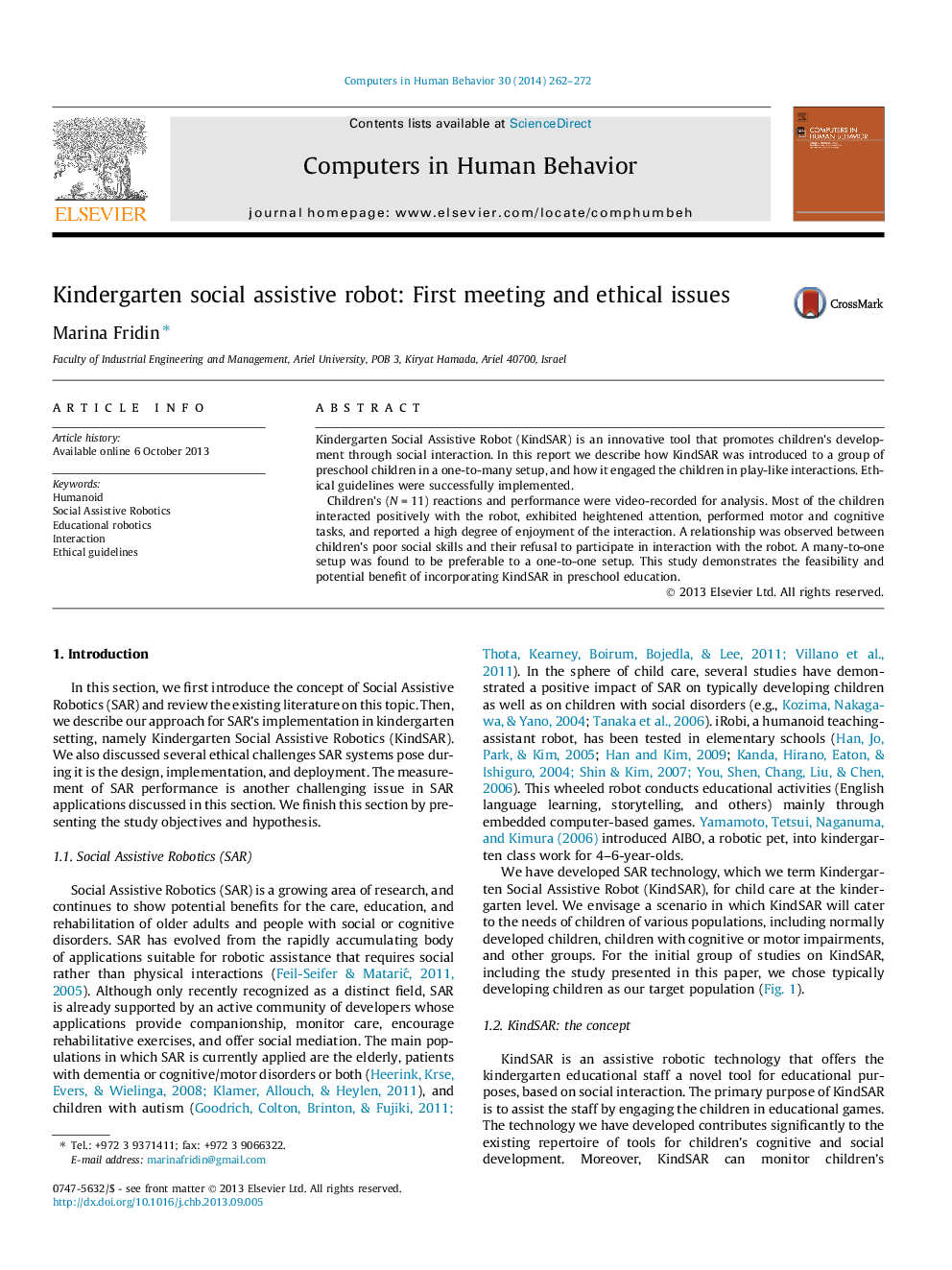| Article ID | Journal | Published Year | Pages | File Type |
|---|---|---|---|---|
| 350674 | Computers in Human Behavior | 2014 | 11 Pages |
•Kindergarten assistive robot engaged the children in play-like interactions.•Children exhibited positive interactions, high attention, performed motor/cognitive tasks.•Poor social skills were associated with refusal to interact with the robot.•A one-to-many set-up was preferable to a one-to-one setup.
Kindergarten Social Assistive Robot (KindSAR) is an innovative tool that promotes children’s development through social interaction. In this report we describe how KindSAR was introduced to a group of preschool children in a one-to-many setup, and how it engaged the children in play-like interactions. Ethical guidelines were successfully implemented.Children’s (N = 11) reactions and performance were video-recorded for analysis. Most of the children interacted positively with the robot, exhibited heightened attention, performed motor and cognitive tasks, and reported a high degree of enjoyment of the interaction. A relationship was observed between children’s poor social skills and their refusal to participate in interaction with the robot. A many-to-one setup was found to be preferable to a one-to-one setup. This study demonstrates the feasibility and potential benefit of incorporating KindSAR in preschool education.
